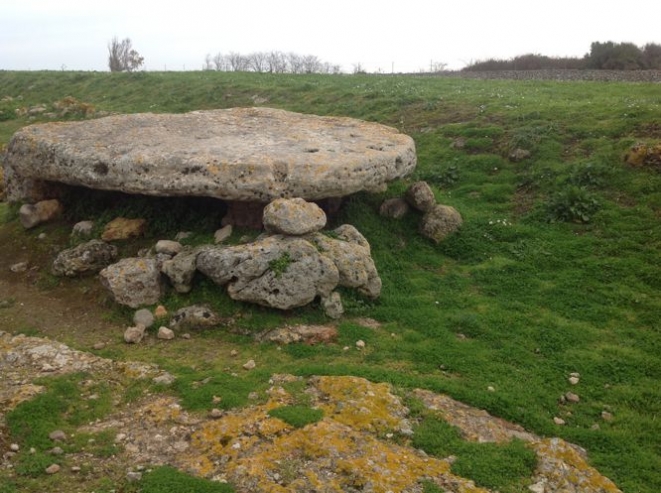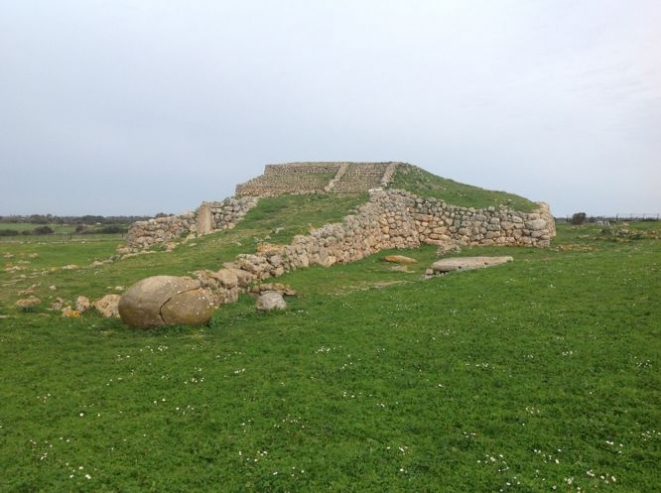The ziggurat of Monte Accoddi the most enigmatic masterpiece of the Sardinian prehistory
Older than the pyramids of the ancient Egyptians, extraordinary, unique and full of mystery, it is one of the greatest examples of prehistoric constructions of Europe
A ziggurat in Sardinia. How could a typical Mesopotamian monument come from hundreds of kilometers away from its place of origin and why did it come right in Sardinia?
This is one of the many questions that have not yet been answered and that probably will not hold it ever, because the mysteries surrounding the sacred altar of Monte d'Accoddi, between Sassari and Porto Torres, is really unexplainable.
A place and a monument come from a mystery that we find even in the name. And we start right from this. The name Monte d'Accoddi turns out to be, like this prodigious hill, quite mysterious.
If the word Monte (mountain) is easy to understand (in Sardinia we tend to call mountain even little hills), the interpretation of the term Accoddi, which may mean "gathering place" is more complex.
However the ancient name we may find in written texts is "Monte de Code", which meant " Mountain, hill of stones", perhaps because of the stones scattered outcrops loose, before the actual excavations, started in the 50s, under the direction of Ercole Contu.
Kodi and Kodina, in ancient Sardinian respectively mean mountain and stone. So we are facing a real "mountain stone" but also a gathering point.
Originally the monument was marked only by a ramp at the top of which was a building that was the temple itself, daubed with red ocher; today of this building remains only the floor. Probably destroyed by fire, was then built the pyramid with a new terrace and the temple was totally rebuilt.
The word ziggurat means "temple of the sun". The sanctuary of Monte d'Accoddi however, was dedicated to two moon deities, the god Narma and goddess Ningal.
Observe at a little distance the great truncated pyramid structure (36 x 29 meters, and a height of 5.40 meters), with its long trapezoidal ramp, inspires a great fascination. Take the climb slowly and observing the surrounding world from up there, a little further away from land, a little closer to the stars. Clear Mesopotamian interpretation who wanted united heaven and earth.

The small elevation, a slight hill that stands out on the plain, strikes at first glance.
The land is different view from up here, you could say almost sacred.
Under the feet and of your eyes a monument that has endured many assaults, many weather and so many people.
A place that still has too many secrets and that do not want to reveal them. But the same questions recalls again. A ziggurat in Sardinia? How could this kind of building come to our days?
The mystery, except that we are in an era perhaps too disinterested to probe the memories of his past away, is one of those truly dazzling.
This place has been the center of the world for who knows how long. The center of a world where people and gods follow to each other, before dying and being finally thrown in the most hidden and inaccessible depths of time. The omphalos, (the spheroidal sandstone, placed today next to the altar) is probably there to indicate exactly this representation of the world.
Is it possible that a primitive population had had such a keen intuition to represent, even at that time, the world as a sphere? Which brilliant mind could symbolize the globe in this way? But maybe it is preferable not to give too much weight to one of the many wonders of ingenuity of the prenuragic people, and it is easier to downgrade this part of the monument to a coincidence or to make it look like something else.
All known cultures, that populated Sardinia since Neolithic times, are in some ways past all from here and a reason there must be.
In addition to the omphalos, deepen the mystery, there is also the presence of a trapezoidal slab stone, sustained by three supports, with seven through holes. It is located to the right of the altar, on the ground, and it is assumed that its use was intended for animal sacrifices, with a clever slot to drain the blood of the sacrificed animal.

The techniques of construction of the temple surmounting the plain are almost identical to those used in the ziggurats of Mesopotamia, which suggests that the idea of creating such a building had come to a man that somehow knew how to got in Sardinia, at the dawn of civilization.
From his mind, perhaps, it was born the first plant of the ziggurat, shaped and changed over time according to the beliefs of the population. An intersection of deities and an amalgam of construction techniques. It remains the fact that a ziggurat in Sardinia is certainly a mystery, especially if you consider that archaeologists believe it is most ancient then the pyramids of Egypt.
But it is not only this which places the sacred hill of Monte d'Accoddi in a position of prominence in the archaeological stage. It not only precedes by about three thousand years even the Mayan pyramids, but it results to be the oldest building in the world oriented with Venus.
By chance, one would say, summarily. But of causality has very little a structure whose center of the altar has an orientation towards the horizon that coincides exactly with the sunset point of Venus. So how it is far from accidental that the position of the altar fits perfectly with the rising points of Sun and Moon. In fact, looking at the two southeast menhirs, from the top of the pyramid, one realizes that they indicates exactly towards the points where the three heavenly bodies rise at the horizon.
Several archaeological sites have made their luck with astral coincidences and, thanks to this, they welcome every year hundreds of thousands of visitors from around the world, (pace of archaeologists) and maybe one day even Monte d'Accoddi, the unique ziggurat of Europe , with its mysterious charm, will have its revenge.